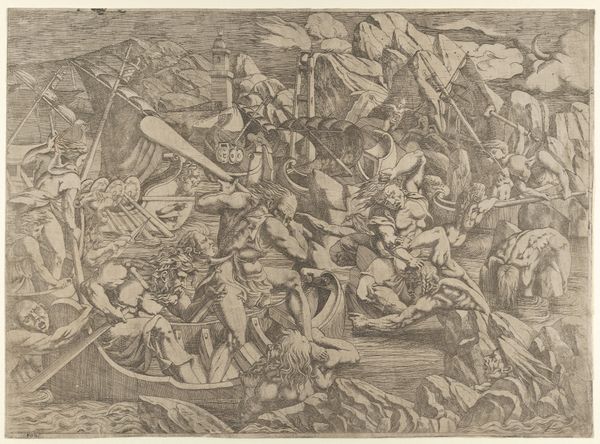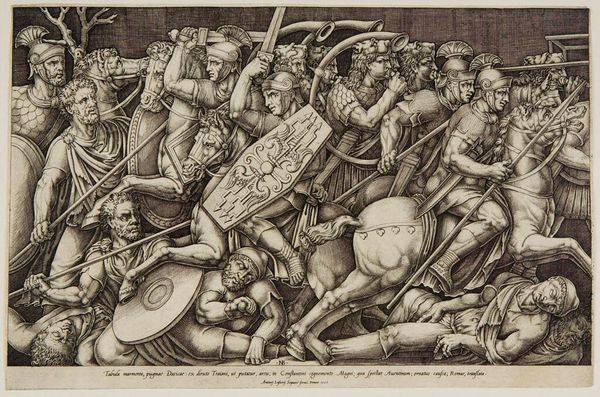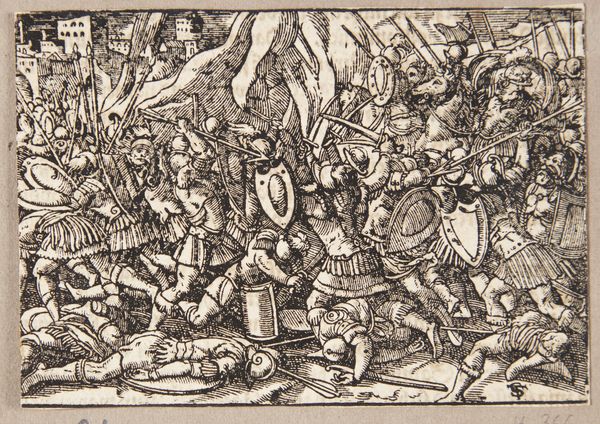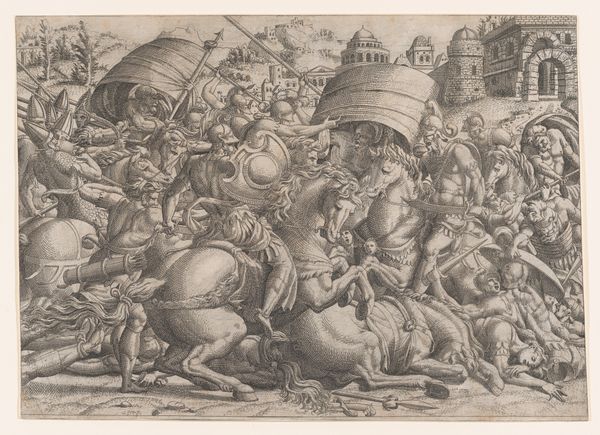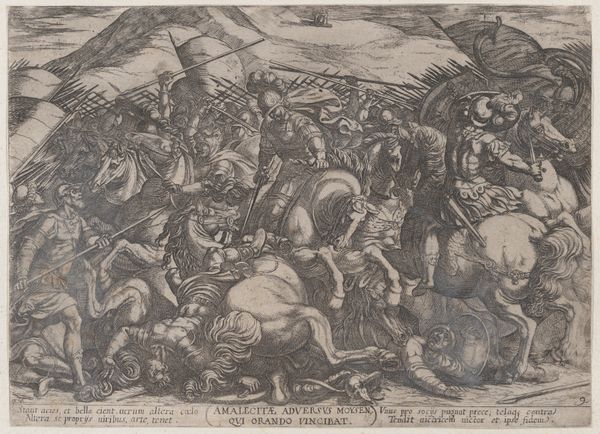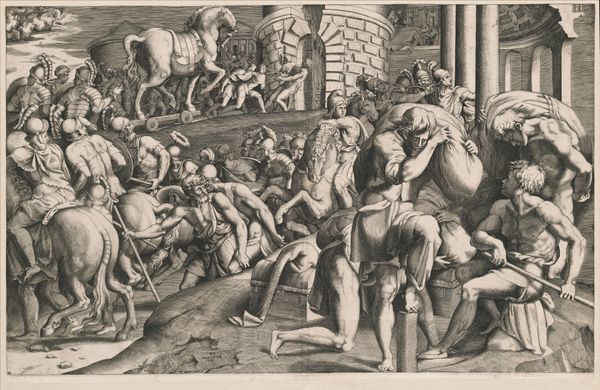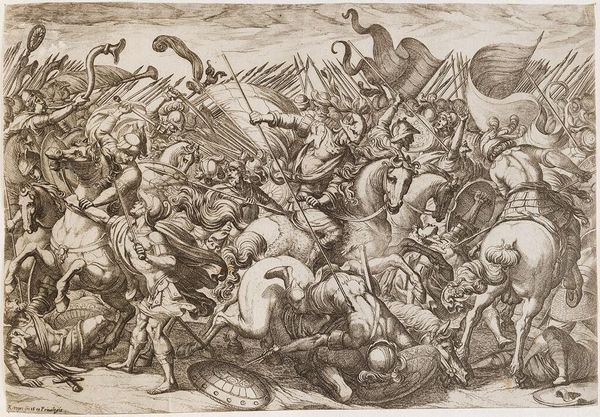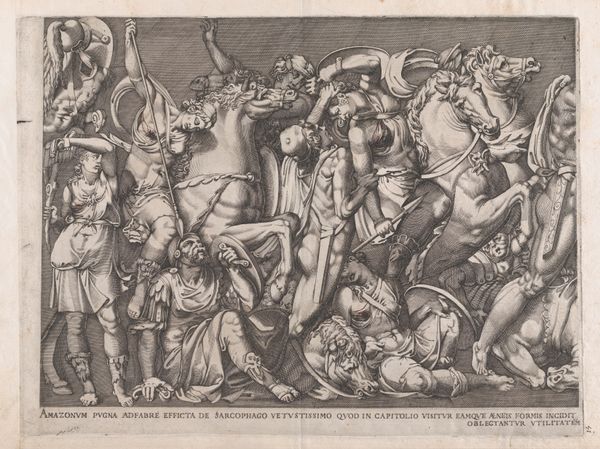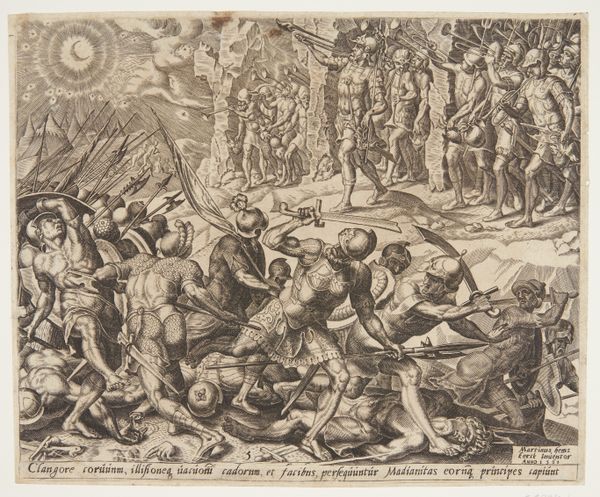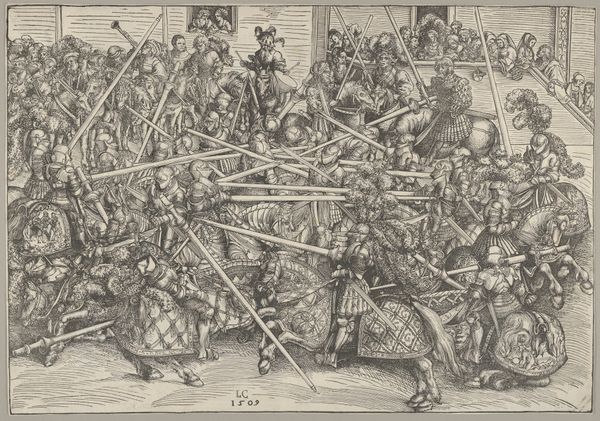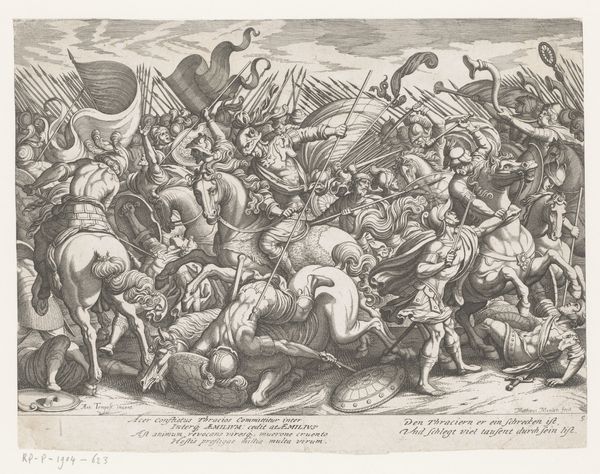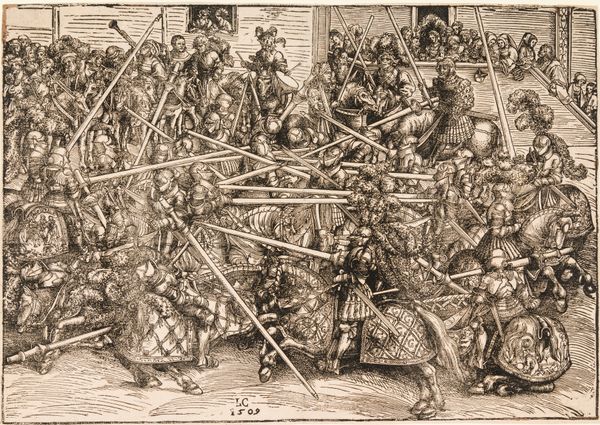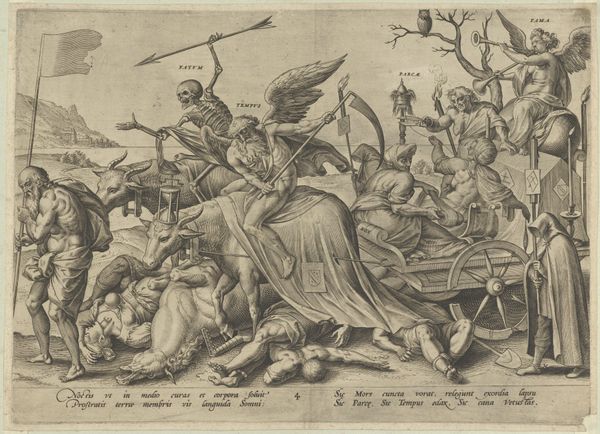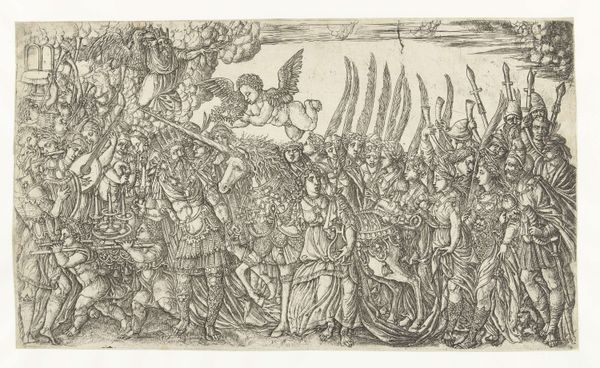
Roman soldiers fighting against Dacians, battle scene in shallow depth with horses and horn-players (after a bas-relief on the Arch of Constantine, Rome) 1553
0:00
0:00
drawing, print, engraving
#
drawing
#
medieval
#
pen drawing
# print
#
landscape
#
figuration
#
romanesque
#
soldier
#
horse
#
men
#
genre-painting
#
history-painting
#
musical-instrument
#
engraving
Dimensions: Sheet: 11 5/8 x 17 13/16 in. (29.6 x 45.3 cm)
Copyright: Public Domain
Curator: This engraving, made in 1553 by Nicolas Beatrizet, depicts a battle scene between Roman soldiers and Dacians. It’s inspired by a bas-relief on the Arch of Constantine in Rome. Editor: My immediate reaction is chaos. The density of figures and the swirling lines create a dynamic, almost dizzying effect. What strikes you about its formal qualities? Curator: The use of line is indeed remarkable. Beatrizet uses hatching and cross-hatching to define form and create a sense of depth, although the shallowness of the depth is something of a mannerist trick. The composition is carefully constructed, guiding the eye through the melee. The interplay of light and shadow adds drama. Editor: Seeing this scene rendered as a print, several centuries removed from the actual battles, it is impossible to ignore the romanticisation of war and empire being promulgated here. I can’t help but wonder, for whom was it produced and consumed? Did this imagery reinforce particular political ideologies of the time? Curator: Precisely. Prints like these were powerful tools for disseminating information and shaping public opinion. The Arch of Constantine itself was built to celebrate Constantine’s victory, so reproducing its imagery served to perpetuate the idea of Roman military prowess and imperial dominance, not just its military engineering. It is worth reflecting that this would serve as both imperial Roman propaganda, and that of the Italian city states which were sometimes casting themselves as direct successors of Rome itself. Editor: I suppose that focusing too much on this artistic intention distracts me somewhat from Beatrizet’s skill, which remains visible even if co-opted to a propaganda exercise. The details in the soldiers' armor and the horses’ musculature—it shows immense skill with a burin. The emotional intensity that is depicted amongst those engaged in such ferocious combat seems palpable. Curator: Yes, there is a tension in understanding this artwork. Beatrizet's technical skill creates a very strong sense of immediacy that perhaps masks the ideological dimensions of the work. Editor: Ultimately, considering both its aesthetic construction and its socio-political implications enriches our understanding of its meaning. It's a complex image reflecting not just military history, but also how power is constructed and disseminated through art. Curator: An important reminder that an artwork exists not just in its immediate visual form, but as a cultural artefact within the flow of history.
Comments
No comments
Be the first to comment and join the conversation on the ultimate creative platform.
